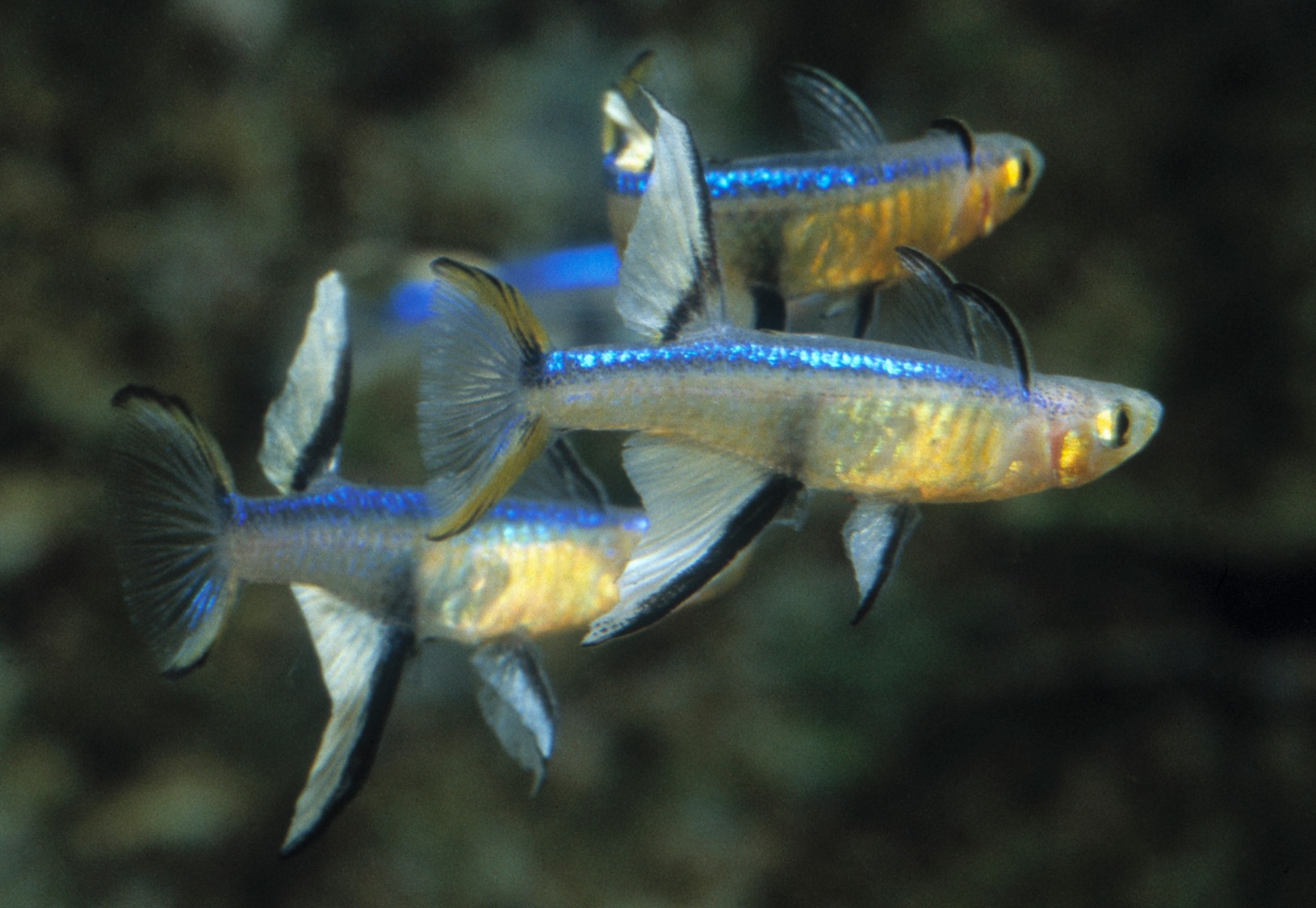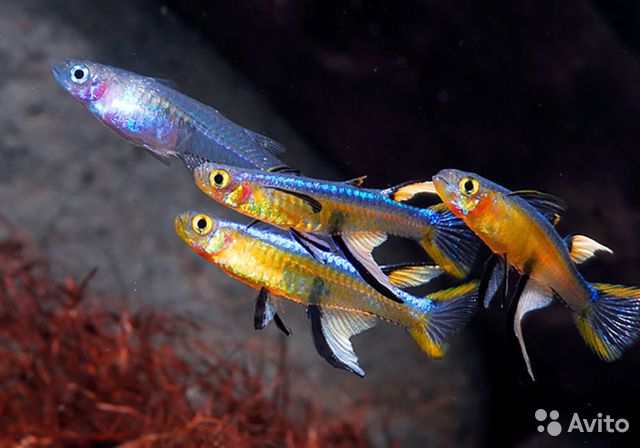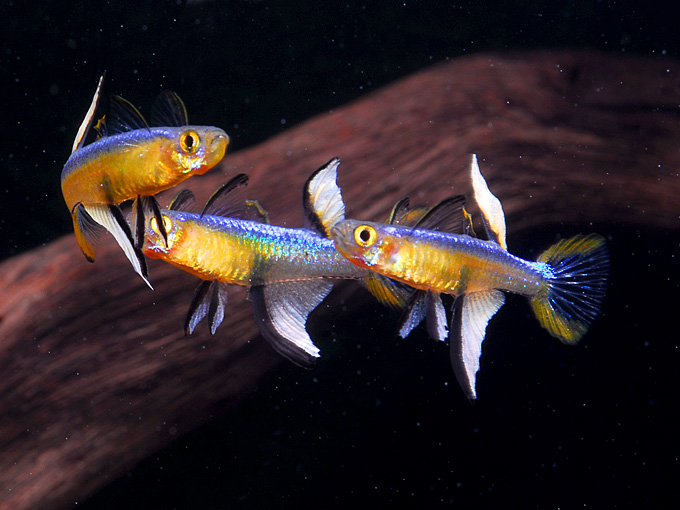If you like to extend the limits of what is possible in reefing then let us introduce you to the Neon Blue Eye, Pseudomugil cyanodorsalis. A genus of mainly freshwater fish from Australia and New Guinea, Pseudomugil gertrudae and furcatus are the two species you’ll usually find gracing tropical planted tanks with their delicate blue eyes, double dorsals, and male fin-flaring.
Get more into Pseudomugil and you may find and keep the beautiful P. paskai or P. ivantsoffi, but go deeper and you’ll find that some of these members of the rainbowfish family go into brackish waters in the wild and beyond…
“cyanodorsalis are essentially fish of the estuaries,” photographer and rainbowfish expert Gunther Schmida told Reefbuilders. “They swim in the open water of channels or amongst mangrove roots in fully marine environments as well as in low saline conditions.”
 “I have collected them in tiny shallow pools in mangrove zones at night during low tide. I have also kept them in self-sustaining small schools in 180 liter (47 gallon) tanks at salinities of 30 – 50 % seawater. They survive in pure freshwater for a few weeks but not long term. Although I’ve never kept them in full strength seawater I can’t see why that would be a problem. They are great little fish to keep but need a bit of room to dart about. They are incredibly active.”
“I have collected them in tiny shallow pools in mangrove zones at night during low tide. I have also kept them in self-sustaining small schools in 180 liter (47 gallon) tanks at salinities of 30 – 50 % seawater. They survive in pure freshwater for a few weeks but not long term. Although I’ve never kept them in full strength seawater I can’t see why that would be a problem. They are great little fish to keep but need a bit of room to dart about. They are incredibly active.”
40ppt salinity
We researched the species further and sure enough, the Neon Blue Eye does inhabit saline waters and occurs naturally in salinities up to 40 parts per thousand. Our reef tanks usually run from 33-35ppt so this tiny rainbowfish could and should live quite happily in full-strength seawater in captivity, as it survives that and more as part of its lifecycle in the wild.
A tiny species, they grow to just 3.5cm (1.4”) with a natural range stretching from Broome in Western Australia to Darwin in the Northern Territory.

Captive Care
But this doesn’t mean that if we find any offered for sale we can throw them into our mixed reefs and they’ll be ok. Their tiny size will put them on the menu of hawkfish, anemones, even some wrasses, and our reef crest flow patterns will be a far cry from the quiet, tangled backwaters of a mangrove swamp. They could be at risk of being drawn into powerheads and may even fit through bulkhead strainers and weir combs.
Instead, this delicate species’ requirements scream out for shallow saltwater lagoon, live mangroves, and even a tidal system if you have the know-how. Set the scene with a fine sand bed or marine mud substrate with vertical roots and macroalgae, and bright low Kelvin light with a slow steady flow.
This different kind of marine tank could then also lend itself to the care of other small, delicate species like Red Spot Cardinalfish, pipefish, or Scooter Blennies, which may also fare badly and be outcompeted for food in the daily rough and tumble of a mixed reef.
Or keep it authentic and set up a Northern Australian mangrove biotope, a true home-from-home for a special little “saltwater” fish.
Image used with kind permission by copyright owner Gunther Schmida.



